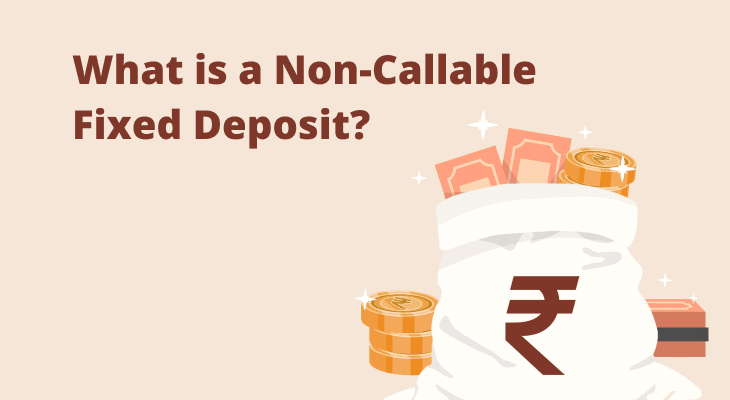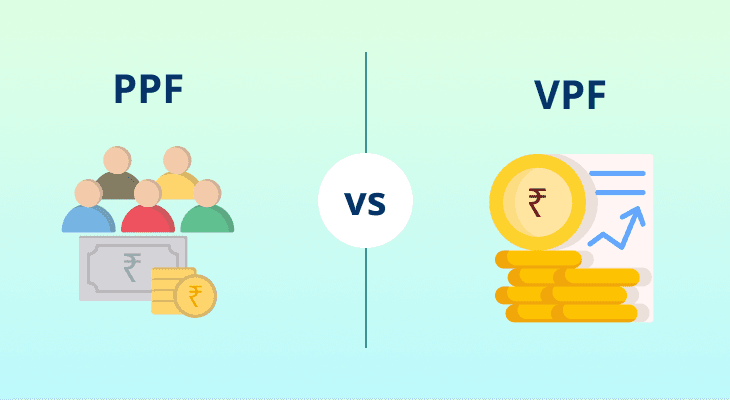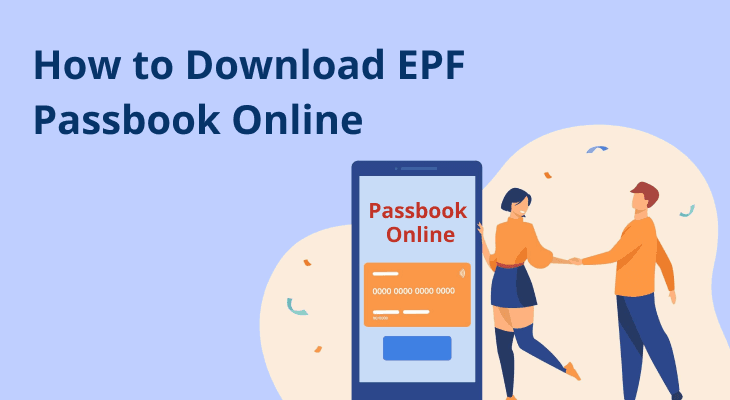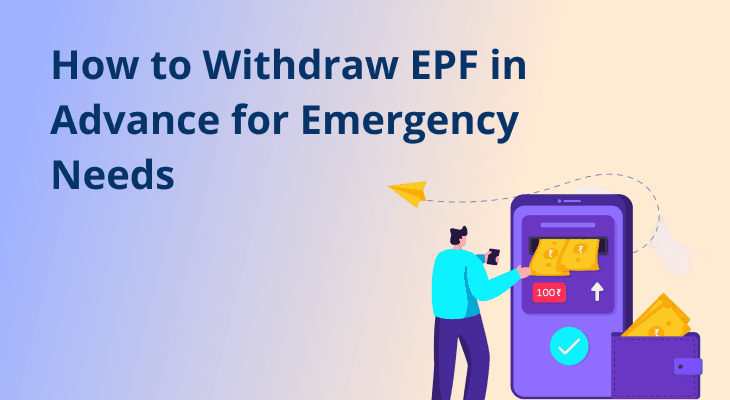
What is a Non-Callable Fixed Deposit?
Fixed deposits (FDs) have long been India’s go-to parking lot for surplus cash, as they offer predictable returns, near-zero paperwork, and deposit insurance of up to ₹5 lakh.
Yet, conventional, or callable FDs come with a safety valve – that is, the right to break the deposit early by paying a small penalty. Starting 2015, the Reserve Bank of India (RBI) passed a regulation that allowed banks to create another kind of Fixed Deposits. These were term deposits that came without that break option if the ticket size was above ₹15 lakh.
Since then, products branded “FD Plus”, “Extra”, “Supreme” or simply non-callable fixed deposits have become a favourite of high-ticket savers who want a few extra basis points without taking market risk. This article decodes how these instruments work, what they pay, and whether they deserve a slot in your portfolio.
Introduction to Non-Callable Fixed Deposits
A non-callable deposit (also called an FD that doesn’t offer premature-withdrawal) is a term deposit that locks both the customer and the bank into the agreed tenure. You hand over a lump sum that is higher than ₹15,00,000 (at most institutions) and agree not to ask for your money back before maturity. The bank, in turn, gives you a better deal by quoting a higher rate than an otherwise similar “callable” FD.
According to the RBI’s rule-book,
- For retail investors (single or joint) holding ₹15 lakh or less, premature withdrawal must be permitted.
- For deposits above ₹15 lakh, banks may issue a version that bars early closure, except in rare events such as regulatory orders, death-claim settlements or a court directive.
In essence, a non-callable FD is a fixed-income contract where the investor trades liquidity for a modest yield gain and the bank gains predictability in its asset-liability management (ALM).
How Non-Callable FDs Work?
Below are some of the important features of non-callable FDs that investors must be aware of:
Feature | Typical specification | Rationale |
|---|---|---|
Minimum deposit | ₹15 lakh (some banks apply ₹1 crore for bulk buckets). | Aligns with RBI guidelines and targets larger, stickier balances |
Tenure range | 1 year to 2 years at most banks; a few offer up to 10 years. | Short ALM window helps banks manage interest-rate risk |
Interest credit | Simple or compounding (quarterly/half-yearly) same as regular FDs. | Keeps taxation and TDS mechanics familiar |
Rate premium | 10-25 basis points (0.10%–0.25 %) over callable FD of identical tenor. | Compensation for zero liquidity |
Premature exit | Not allowed. If bank permits under exceptional circumstances, no interest is paid and any credited interest is clawed back. | Ensures deposit really stays till maturity |
Loan/OD against FD | Generally not available. | Prevents indirect liquidity leakage |
Auto-renewal | Rarely offered, fresh instructions are needed at maturity. | Gives bank a chance to re-price the liability |
Benefits of Non-Callable FDs
Compared to traditional FDs, non-callable FDs have the following upsides for investors and banks:
- Incremental yield for a simple trade-off: Locking away liquidity earns an immediate pay-rise on your money. Non-callable buckets are typically priced 10-25 basis-points above equivalent callable FDs.
Thus, a ₹30 lakh, 18-month placement at 6.60 percent instead of 6.45 percent delivers roughly ₹11,000 more interest. Because every rupee earns the higher rate from day one (no bonus conditions, no step-ups) the reward is straightforward and automatic.
- Straightforward, market noise-free returns: Your promised interest never wobbles with bond-yield increases or credit-spread jitters.
Bank FDs are carried at par and the first ₹5 lakh per depositor per bank is protected by DICGC insurance, so neither mark-to-market swings nor downgrade headlines disturb your payout schedule. What you see on the term-deposit advice is what you receive at maturity.
- Predictable funding lets banks share the spoils: For the bank, money that cannot be asked for mid-tenor behaves like a perfectly matched liability. It cuts the liquidity buffer a treasury must hold, freeing capital to write longer-tenor loans.
Part of that internal saving is recycled back to you via the rate premium, and so the depositor’s discipline directly converts into extra yield.
- Perfect fit for goal-based parking: Known, date-certain expenses, like next year’s tuition, scheduled advance-tax instalments, and property registry payments call for an investment that you can neither withdraw impulsively nor have to worry about.
A non-callable FD that matures a week before the liability date turns that corpus into a sealed envelope, and the modest yield edge often offsets ancillary costs such as stamp duty or travel.
- Crystal-clear contract, zero ambiguity: RBI rules insist that the “no premature withdrawal” clause be printed prominently on the receipt.
With terms carved in stone, there is no confusion over penalty grids or interest payback. The customer, branch and core-banking system all work off the same black-and-white contract.
- Built-in behavioural discipline: Removing the break option acts as a psychological guard-rail.
You cannot liquidate on a whim, and this reduces lifestyle creep and prevents knee-jerk portfolio churn. Over time, this enforced patience magnifies compounding gains and helps keep long-term financial goals on track.
- Negotiating edge and senior-citizen benefits: Large deposits, like eight-figure corporate treasuries or HNI surpluses can sometimes command bespoke spreads precisely because they are non-callable.
Meanwhile senior citizens often receive their usual 50-basis-point bonus on top of the non-callable premium, creating one of the highest risk-free yields available without venturing into bonds or market-linked debentures.
Limitations and Risks
At the same time, investors should also consider the following risks of investing in a non-callable FD:
#1. Absolute illiquidity
The lock-in feature is unforgiving: once the deposit is booked, you have no legal right to encash it before maturity. Even bona-fide emergencies such as medical expenses or a sudden job loss will not sway the branch manager, because the core‐banking system physically blocks premature closure.
The only exits possible are due to extreme events like death of the depositor, court intervention, or regulatory directives. Even then the bank refunds only principal, revoking every rupee of interest already credited. In effect, you must treat the amount as temporarily out of your net worth until the exact maturity date.
#2. Large deposit size and concentration risk
With a minimum threshold of ₹15 lakh (and in some banks ₹1 crore for bulk slabs), small savers are excluded by design.
Parking such a large lump sum in a single instrument can also distort portfolio balance: if the issuing bank’s health deteriorates, the portion beyond the ₹5 lakh DICGC cover is exposed. Investors should therefore diversify across banks or pair a non-callable tranche with other low-correlation assets to avoid over-weighting one institution.
#3. Interest-rate risk for investors
The rate you lock in today is etched in stone, but the macro environment is not. Should RBI hike policy rates six months later, fresh deposits will offer higher interest rates, while yours will remain stuck at the lower figure.
Because a non-callable FD cannot be broken or transferred, you forfeit the “re-roll” option available with callable FDs and short-duration debt funds. The flip side is that the bank gains an inexpensive, fixed-rate liability if rates rise, tilting the risk–reward equation in its favour.
#4. No overdraft or loan-against-FD facility
Traditional callable FDs double as collateral: most banks will lend up to 90 percent of the principal at 1–2 percent above the deposit rate, creating a handy emergency buffer.
Non-callable deposits usually bar this practice outright, because any loan against the lien would defeat the purpose of a locked liability. The absence of this back-door liquidity means you must maintain a separate contingency fund to handle shocks.
#5. Limited tenor choices
At present, non-callable products are largely confined to between 1 and 2 years, where banks can forecast rates with reasonable accuracy.
Thus, savers who want to lock funds for five or seven years and avoid reinvestment risk will struggle to find an equivalent offering.
Conversely, ultra-short goals (six to nine months) cannot be served by these products either, forcing investors to resort to callable FDs or money-market funds for those horizons.
#6. Tax treatment unchanged
The incremental 10-25 basis-point premium is still taxed as ordinary income, pushing the entire interest into your slab rate and attracting TDS once yearly interest crosses ₹40,000.
For taxpayers in the 30% bracket, more than one-third of the extra yield is lost to the exchequer, narrowing the real advantage over other options such as sovereign-gold bonds or debt mutual funds (now taxed at slab but offering potential capital-loss harvesting).
Who Should Consider Non-Callable FDs?
So, who should invest into a non-callable FD instead of its traditional counterpart? Here are a few profiles for whom non-callable FD would be lucrative:
- High-net-worth individuals and family offices holding idle cash for up to two years and wanting sovereign-insured returns with a slight edge.
- Corporates, societies, trusts with scheduled cash outflows on a fixed date (e.g., capex payments) that can match FD maturity to liability.
- Risk-averse retirees who depend on interest income but keep an adequate liquidity buffer elsewhere (liquid funds, sweep FDs) for contingencies.
- Investors diversifying the debt bucket of a multi-asset portfolio and willing to accept locked liquidity in exchange for incremental yield.
You should not choose a non-callable fixed deposit if you are unsure about cash needs, expect rising interest rates in the near future, or dislike tying up large sums in a single bank.
Conclusion
A non-callable fixed deposit is basically a vanilla FD with that “break” button removed. That simple tweak hands banks a more stable liability profile and rewards disciplined savers with a modest yield enhancement.
It works best when you (a) have surplus cash you won’t require before maturity, (b) are satisfied with low-risk, fixed returns, and (c) can accept forgoing liquidity for the agreed term.
Treat it as a tactical parking bay, not as a fund which can serve as a fallback. Lastly, always cross-check the latest non callable FD rates. The extra basis points vary widely across institutions and over time.
Additional Read: Fixed Deposit vs Recurring Deposit : Key Differences & Best Choice
Additional Read: Fixed Deposit Vs. Stock Market: Difference FD Vs. Share Market
FAQ
What exactly makes an FD “non-callable”?
It is an FD where the bank contractually removes the option for premature closure. Unless there is a regulatory order, death claim or bankruptcy proceeding, the money stays locked until maturity.
Why is the minimum ticket ₹15 lakh?
The RBI permits banks to issue non-premature-withdrawal deposits only above that threshold. Anything ₹15 lakh or below must retain a break feature.
How much extra interest do non-callable deposits pay?
Typically, 10-25 basis points more than a comparable callable FD.
Can I get a loan against a non-callable FD?
Most banks disallow overdrafts or loans against such deposits because it defeats the lock-in purpose.
What happens if I must break it?
You normally cannot. If the bank lets you withdraw under exceptional situations (e.g., court order), it will pay zero interest and revoke any interest already credited.
Are non-callable FDs safer than regular FDs?
Credit risk and DICGC cover are identical. The only extra “risk” you bear is liquidity risk, not safety risk. The bank’s solvency and deposit insurance limit remain the same.


